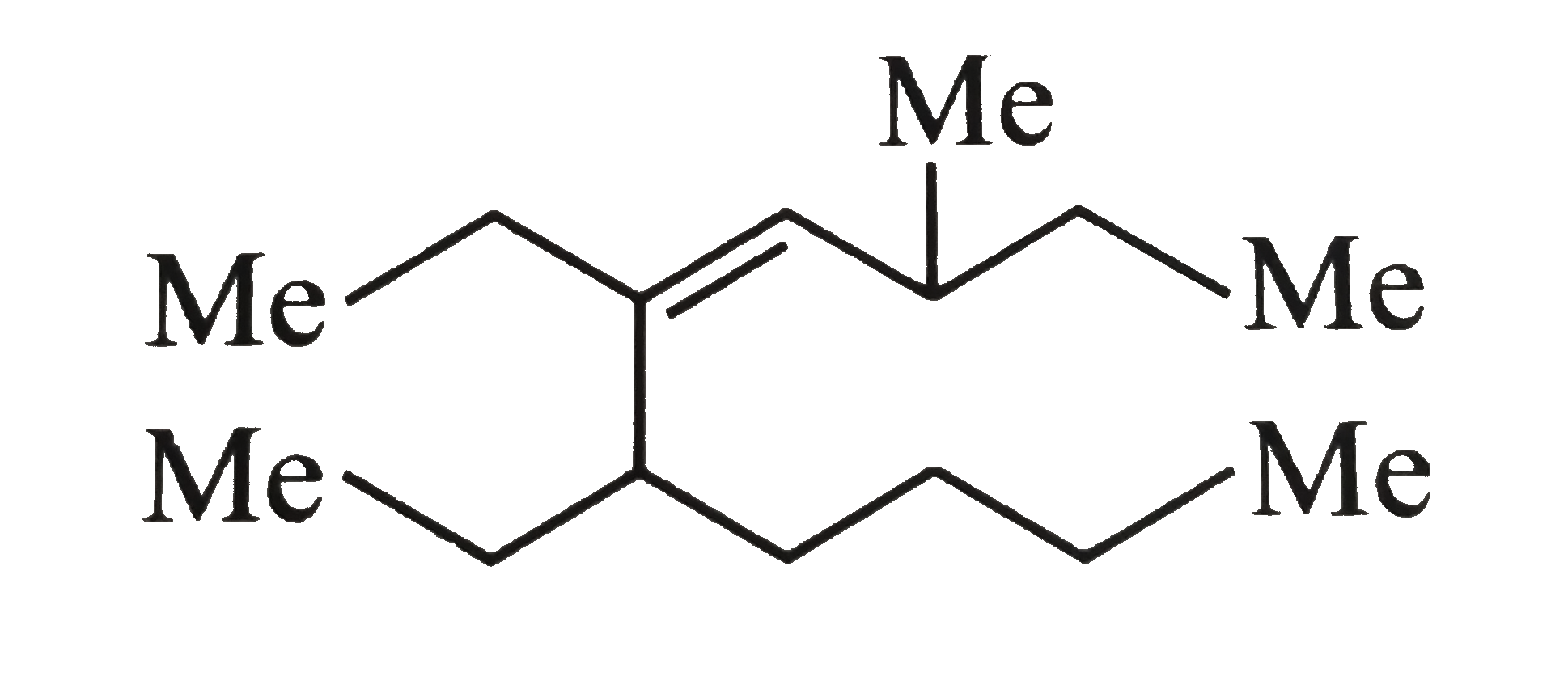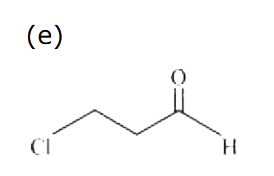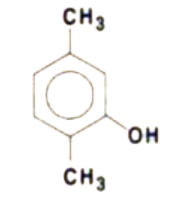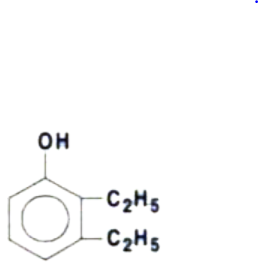Give the IUPAC names of the following coordina tion compounds :
To determine the IUPAC name of the coordination compound K2(Zn(OH)4), we can follow these steps:
Step 1: Identify the components of the compound
The compound consists of a coordination complex (Zn(OH)4)2− and two potassium ions K+ as counter ions.
Step 2: Determine the central metal and its oxidation state
In the complex ion (Zn(OH)4)2−:
- The central metal atom is zinc (Zn).
- Each hydroxide ion (OH−) has a charge of -1. Since there are four hydroxide ions, the total negative charge contributed by hydroxide ions is 4×(−1)=−4.
- The overall charge of the complex ion is -2. Therefore, we can set up the equation for the oxidation state (x) of zinc:
x+(−4)=−2
Solving for x gives:
x=+2
Thus, the oxidation state of zinc in this complex is +2.
Step 3: Name the ligands
The ligand in this complex is the hydroxide ion (OH−). In coordination chemistry, hydroxide is named "hydroxo." Since there are four hydroxide ligands, we use the prefix "tetra-" to indicate this:
- The name of the ligand is "tetrahydroxo."
Step 4: Name the central metal
Since zinc has an oxidation state of +2, we denote this in the name using Roman numerals. The name of the metal is "zinc," and with the oxidation state, it becomes "zinc(II)" or "zincate" for the anionic complex.
Step 5: Combine the names
Now we combine the names of the ligands and the metal:
- The full name of the coordination complex is "tetrahydroxo zincate."
Step 6: Include the counter ions
Since there are two potassium ions as counter ions, we place "potassium" before the name of the coordination complex:
- The final IUPAC name of the compound is "potassium tetrahydroxo zincate."
Final Answer:
The IUPAC name of K2(Zn(OH)4) is potassium tetrahydroxo zincate(II).
---
The compound consists of a coordination complex (Zn(OH)4)2− and two potassium ions K+ as counter ions.
In the complex ion (Zn(OH)4)2−:
- The central metal atom is zinc (Zn).
- Each hydroxide ion (OH−) has a charge of -1. Since there are four hydroxide ions, the total negative charge contributed by hydroxide ions is 4×(−1)=−4.
- The overall charge of the complex ion is -2. Therefore, we can set up the equation for the oxidation state (x) of zinc:
x+(−4)=−2
Solving for x gives:
x=+2
Thus, the oxidation state of zinc in this complex is +2.
The ligand in this complex is the hydroxide ion (OH−). In coordination chemistry, hydroxide is named "hydroxo." Since there are four hydroxide ligands, we use the prefix "tetra-" to indicate this:
- The name of the ligand is "tetrahydroxo."
Since zinc has an oxidation state of +2, we denote this in the name using Roman numerals. The name of the metal is "zinc," and with the oxidation state, it becomes "zinc(II)" or "zincate" for the anionic complex.
Now we combine the names of the ligands and the metal:
- The full name of the coordination complex is "tetrahydroxo zincate."
Since there are two potassium ions as counter ions, we place "potassium" before the name of the coordination complex:
- The final IUPAC name of the compound is "potassium tetrahydroxo zincate."
The IUPAC name of K2(Zn(OH)4) is potassium tetrahydroxo zincate(II).
Topper's Solved these Questions
- BOOK - ICSECHAPTER - SAMPLE PAPER 2013EXERCISE - PART-II (SECTION-C)17videos
SAMPLE PAPER 2013
- BOOK - ICSECHAPTER - SAMPLE PAPER 2013EXERCISE - PART-II (SECTION-A)18videos
SAMPLE PAPER 2013
- BOOK - ICSECHAPTER - SAMPLE PAPER 2012EXERCISE - PART-II (SECTION-C)21videos
SAMPLE PAPER 2012
- BOOK - ICSECHAPTER - SAMPLE PAPER 2014EXERCISE - PART-II (SECTION -C)21videos
SAMPLE PAPER 2014
Similar Questions
Give the IUPAC name of the following compound:
 View Solution
View SolutionGive the IUPAC name of the following compound.
 View Solution
View SolutionGive the IUPAC name of the following compounds
View SolutionGive the IUPAC name of the following compound.
 View Solution
View SolutionGive the IUPAC name of the following compound :
 View Solution
View SolutionGive the IUPAC names of the following compounds :

 View Solution
View SolutionGive the IUPAC names of the following compounds :
 View Solution
View SolutionGive the IUPAC names of the following compounds :
 View Solution
View SolutionGive the IUPAC names of the following compounds :
 View Solution
View SolutionGive the IUPAC names of the following compounds :
 View Solution
View Solution

